Recent Advances in Energy Storage Systems for Renewable Source Grid Integration: A Comprehensive Review
Abstract
1. Introduction
2. Global Renewable Installation
3. Energy Storage Necessity
4. Energy Storage Systems
4.1. Battery Energy Storage Systems (BESS)
4.2. Flywheel Energy Storage (FES)
4.3. Compressed Air Energy Storage (CAES)
4.4. Pumped Hydro Storage (PHS)
4.5. Superconducting Magnetic Energy Storage (SMES)
4.6. Supercapacitor Energy Storage Systems (SCESS)
5. Discussion and Recommendation
6. Conclusions
Funding
Conflicts of Interest
References
- Worku, M.Y.; Hassan, M.; Abido, M.A. Real Time-Based under Frequency Control and Energy Management of Microgrids. Electronics 2020, 9, 1487. [Google Scholar] [CrossRef]
- Worku, M.Y.; Hassan, M.A.; Abido, M.A. Power Management, Voltage Control and Grid Synchronization of Microgrids in Real Time. Arab. J. Sci. Eng. 2021, 46, 1411–1429. [Google Scholar] [CrossRef]
- Worku, M.Y.; Hassan, M.A.; Abido, M.A. Real Time Energy Management and Control of Renewable Energy based Microgrid in Grid Connected and Island Modes. Energies 2019, 12, 276. [Google Scholar] [CrossRef]
- Ritchie, H.; Roser, M.; Rosado, P. The Energy Data Explorer. Available online: https://ourworldindata.org/energy (accessed on 5 February 2022).
- IEA. World Energy Balances: Overview; IEA: Paris, France, 2021; Available online: https://www.iea.org/reports/world-energy-balances-overview (accessed on 25 January 2022).
- Hamza, A. Techno-Economic Analysis of Energy Storage Integration for Solar PV in Burkina Faso. Master’s Thesis, KTH School of Industrial Engineering and Management Energy Technology, Stockholm, Sweden, 2019. [Google Scholar]
- Al-Foraih, R.; Sreekanth, K.J.; Al-Mulla, A. A techno-economic analysis of the integration of energy storage technologies in electric power systems. J. Renew. Sustain. Energy 2018, 10, 054102. [Google Scholar] [CrossRef]
- Zakeri, B.; Syri, S. Electrical energy storage systems: A comparative life cycle cost analysis. Renew. Sustain. Energy Rev. 2015, 42, 569–596. [Google Scholar] [CrossRef]
- Al Shaqsi, A.Z.; Sopian, K.; Al-Hinai, A. Review of energy storage services, applications, limitations, and benefits. Energy Rep. 2020, 6, 288–306. [Google Scholar] [CrossRef]
- Kebede, A.A.; Kalogiannis, T.; Van Mierlo, J.; Berecibar, M. A comprehensive review of stationary energy storage devices for large scale renewable energy sources grid integration. Renew. Sustain. Energy Rev. 2022, 159, 112213. [Google Scholar] [CrossRef]
- Tan, K.M.; Babu, T.S.; Ramachandaramurthy, V.K.; Kasinathan, P.; Solanki, S.G.; Raveendran, S.K. Empowering smart grid: A comprehensive review of energy storage technology and application with renewable energy integration. J. Energy Storage 2021, 39, 102591. [Google Scholar] [CrossRef]
- Jafari, M.; Botterud, A.; Sakti, A. Decarbonizing power systems: A critical review of the role of energy storage. Renew. Sustain. Energy Rev. 2022, 158, 112077. [Google Scholar] [CrossRef]
- IRENA. Electricity Storage and Renewables: Costs and Markets to 2030; International Renewable Energy Agency: Abu Dhabi, United Arab Emirates, 2017. [Google Scholar]
- US Department of Energy. Spotlight: Solving Industry’s Energy Storage Challenges. July 2019. Available online: https://energy.gov/technologytransitions (accessed on 23 May 2021).
- Yao, L.; Yang, B.; Cui, H.; Zhuang, J.; Ye, J.; Xue, J. Challenges and progresses of energy storage technology and its application in power systems. J. Mod. Power Syst. Clean Energy 2016, 4, 519–528. [Google Scholar] [CrossRef]
- Murdock, H.E.; Gibb, D.; Andre, T.; Sawin, J.L.; Brown, A.; Ranalder, L.; Collier, U.; Dent, C.; Brumer, L.; Epp, B.; et al. Renewables 2021 Global Status Report, REN21; INIS Liaison Officer: Paris, France, 2021; ISBN 978-3-948393-03-8. [Google Scholar]
- International Renewable Energy Agency (IRENA). Renewable Capacity Highlights. Available online: www.irena.org/statistics (accessed on 31 March 2021).
- EESI Environmental and Energy Study Institute. Fact Sheet Energy Storage. 2019. Available online: https://www.eesi.org/papers/view/energy-storage-2019 (accessed on 12 November 2021).
- Georgious, R.; Refaat, R.; Garcia, J.; Daoud, A.A. Review on Energy Storage Systems in Microgrids. Electronics 2021, 10, 2134. [Google Scholar] [CrossRef]
- Hargreaves, J.J.; Jones, R.A. Long Term Energy Storage in Highly Renewable Systems. Front. Energy Res. 2020, 8, 219. [Google Scholar] [CrossRef]
- Koohi-Fayegh, S.; Rosen, M. A review of energy storage types, applications and recent developments. J. Energy Storage 2020, 27, 101047. [Google Scholar] [CrossRef]
- Loveless, M. Energy Storage: The Key To a Reliable, Clean Electricity Supply. What Is the Potential Impact? Energy.Gov. 2012. Available online: https://www.energy.gov/articles/energy-storage-key-reliableclean-electricity-supply (accessed on 11 December 2019).
- Revankar, S.T. Chemical Energy Storage. In Storage and Hybridization of Nuclear Energy: Techno-Economic Integration of Renewable and Nuclear Energy; Academic Press: Cambridge, MA, USA, 2019; pp. 177–227. [Google Scholar] [CrossRef]
- Hossain, E.; Faruque, H.M.R.; Sunny, M.S.H.; Mohammad, N.; Nawar, N. A Comprehensive Review on Energy Storage Systems: Types, Comparison, Current Scenario, Applications, Barriers, and Potential Solutions, Policies, and Future Prospects. Energies 2020, 13, 3651. [Google Scholar] [CrossRef]
- Poullikkas, A. A comparative overview of large-scale battery systems for electricity storage. Renew. Sustain. Energy Rev. 2013, 27, 778–788. [Google Scholar] [CrossRef]
- Luo, X.; Wang, J.; Dooner, M.; Clarke, J. Overview of current development in electrical energy storage technologies and the application potential in power system operation. Appl. Energy 2015, 137, 511–536. [Google Scholar] [CrossRef]
- Alkafaji, A.S.; Al-Samawi, A.A.; Trabelsi, H. Hybrid Energy Storage Review for Renewable Energy System Technologies and Applications. In Proceedings of the 2021 18th International Multi-Conference on Systems, Signals & Devices (SSD), Monastir, Tunisia, 22–25 March 2021; pp. 1059–1067. [Google Scholar] [CrossRef]
- Energy Storage Industry White Paper 2021 (Summary Paper). Available online: www.en.cnesa.org (accessed on 25 February 2022).
- Abdalla, A.N.; Nazir, M.S.; Tao, H.; Cao, S.; Ji, R.; Jiang, M.; Yao, L. Integration of energy storage system and renewable energy sources based on artificial intelligence: An overview. J. Energy Storage 2021, 40, 102811. [Google Scholar] [CrossRef]
- Rangel-Martinez, D.; Nigam, K.; Ricardez-Sandoval, L.A. Machine learning on sustainable energy: A review and outlook on renewable energy systems, catalysis, smart grid and energy storage. Chem. Eng. Res. Des. 2021, 174, 414–441. [Google Scholar] [CrossRef]
- Rahman, M.; Oni, A.O.; Gemechu, E.; Kumar, A. Assessment of energy storage technologies: A review. Energy Convers. Manag. 2020, 223, 113295. [Google Scholar] [CrossRef]
- Aneke, M.; Wang, M. Energy storage technologies and real life applications—A state of the art review. Appl. Energy 2016, 179, 350–377. [Google Scholar] [CrossRef]
- Salkuti, S.R.; Jung, C.M. Comparative analysis of storage techniques for a grid with renewable energy sources. Int. J. Eng. Technol. 2018, 7, 970–976. [Google Scholar] [CrossRef]
- Arsad, A.Z.; Hannan, M.; Al-Shetwi, A.Q.; Mansur, M.; Muttaqi, K.; Dong, Z.; Blaabjerg, F. Hydrogen energy storage integrated hybrid renewable energy systems: A review analysis for future research directions. Int. J. Hydrogen Energy 2022, 47, 17285–17312. [Google Scholar] [CrossRef]
- Ross, M.; Bindra, H. Estimating energy storage size for Nuclear-Renewable hybrid energy systems using data-driven stochastic emulators. J. Energy Storage 2021, 40, 102787. [Google Scholar] [CrossRef]
- Wu, D.; Wang, D.; Ramachandran, T.; Holladay, J. A techno-economic assessment framework for hydrogen energy storage toward multiple energy delivery pathways and grid services. Energy 2022, 249, 123638. [Google Scholar] [CrossRef]
- Kennedy, K.M.; Ruggles, T.H.; Rinaldi, K.; Dowling, J.A.; Duan, L.; Caldeira, K.; Lewis, N.S. The role of concentrated solar power with thermal energy storage in least-cost highly reliable electricity systems fully powered by variable renewable energy. Adv. Appl. Energy 2022, 6, 100091. [Google Scholar] [CrossRef]
- Pravin, P.S.; Misra, S.; Bhartiya, S.; Gudi, R.D. A reactive scheduling and control framework for integration of renewable energy sources with a reformer-based fuel cell system and an energy storage device. J. Process Control 2020, 87, 147–165. [Google Scholar] [CrossRef]
- Al-Othman, A.; Tawalbeh, M.; Martis, R.; Dhou, S.; Orhan, M.; Qasim, M.; Olabi, A.G. Artificial intelligence and numerical models in hybrid renewable energy systems with fuel cells: Advances and prospects. Energy Convers. Manag. 2022, 253, 115154. [Google Scholar] [CrossRef]
- Javed, M.S.; Ma, T.; Jurasz, J.; Canales, F.A.; Lin, S.; Ahmed, S.; Zhang, Y. Economic analysis and optimization of a renewable energy based power supply system with different energy storages for a remote island. Renew. Energy 2021, 164, 1376–1394. [Google Scholar] [CrossRef]
- Bistline, J.; Blanford, G.; Mai, T.; Merrick, J. Modeling variable renewable energy and storage in the power sector. Energy Policy 2021, 156, 112424. [Google Scholar] [CrossRef]
- De Rosa, M.; Afanaseva, O.; Fedyukhin, A.V.; Bianco, V. Prospects and characteristics of thermal and electrochemical energy storage systems. J. Energy Storage 2021, 44, 103443. [Google Scholar] [CrossRef]
- Zhang, L.; Hu, X.; Wang, Z.; Ruan, J.; Ma, C.; Song, Z.; Dorrell, D.G.; Pecht, M.G. Hybrid electrochemical energy storage systems: An overview for smart grid and electrified vehicle applications. Renew. Sustain. Energy Rev. 2020, 139, 110581. [Google Scholar] [CrossRef]
- Kichou, S.; Markvart, T.; Wolf, P.; Silvestre, S.; Chouder, A. A simple and effective methodology for sizing electrical energy storage (EES) systems based on energy balance. J. Energy Storage 2022, 49, 104085. [Google Scholar] [CrossRef]
- Jansen, G.; Dehouche, Z.; Corrigan, H. Cost-effective sizing of a hybrid Regenerative Hydrogen Fuel Cell energy storage system for remote & off-grid telecom towers. Int. J. Hydrogen Energy 2021, 46, 18153–18166. [Google Scholar] [CrossRef]
- Hill, C.A.; Such, M.C.; Chen, D.; Gonzalez, J.; Grady, W.M. Battery Energy Storage for Enabling Integration of Distributed Solar Power Generation. IEEE Trans. Smart Grid 2012, 3, 850–857. [Google Scholar] [CrossRef]
- Divya, K.C.; Østergaard, J. Battery energy storage technology for power systems—An overview. Electr. Power Syst. Res. 2009, 79, 511–520. [Google Scholar] [CrossRef]
- Alharbi, H.; Bhattacharya, K. Optimal Sizing of Battery Energy Storage Systems for Microgrids. In Proceedings of the 2014 IEEE Electrical Power and Energy Conference, Calgary, AB, Canada, 12–14 November 2014; pp. 275–280. [Google Scholar] [CrossRef]
- Murty, V.V.S.N.; Kumar, A. Retracted article: Multi-objective energy management in microgrids with hybrid energy sources and battery energy storage systems. Prot. Control Mod. Power Syst. 2020, 5, 1–20. [Google Scholar] [CrossRef]
- Lee, Y.; Kim, S.; Hempelmann, R.; Jang, J.H.; Kim, H.J.; Han, J. Nafion membranes with a sulfonated organic additive for the use in vanadium redox flow batteries. J. Appl. Polym. Sci. 2019, 136, 47547. [Google Scholar] [CrossRef]
- Zhang, Z.; Ding, T.; Zhou, Q.; Sun, Y.; Qu, M.; Zeng, Z.; Chi, F.; Ju, Y.; Li, L.; Wang, K. A review of technologies and applications on versatile energy storage systems. Renew. Sustain. Energy Rev. 2021, 148, 111263. [Google Scholar] [CrossRef]
- Martinez, M.; Molina, M.G.; Frack, F.; Mercado, P.E. Dynamic Modeling, Simulation and Control of Hybrid Energy Storage System Based on Compressed Air and Supercapacitors. IEEE Lat. Am. Trans. 2013, 11, 466–472. [Google Scholar] [CrossRef]
- Wali, S.B.; Hannan, M.A.; Reza, M.S.; Ker, P.J.; Begum, R.A.; Rahman, M.S.A.; Mansor, M. Battery storage systems integrated renewable energy sources: A biblio metric analysis towards future directions. J. Energy Storage 2021, 35, 102296. [Google Scholar] [CrossRef]
- Gur, T.M. Review of electrical energy storage technologies, materials and systems: Challenges and prospects for large-scale grid storage. Energy Environ. Sci. 2018, 11, 2696. [Google Scholar] [CrossRef]
- Krishan, O.; Suhag, S. An updated review of energy storage systems: Classification and applications in distributed generation power systems incorporating renewable energy resources. Int. J. Energy Res. 2019, 43, 6171–6210. [Google Scholar] [CrossRef]
- Qi, X.; Wang, J.; Królczyk, G.; Gardoni, P.; Li, Z. Sustainability analysis of a hybrid renewable power system with battery storage for islands application. J. Energy Storage 2022, 50, 104682. [Google Scholar] [CrossRef]
- Emmett, R.K.; Roberts, M.E. Recent developments in alternative aqueous redox flow batteries for grid-scale energy storage. J. Power Sources 2021, 506, 230087. [Google Scholar] [CrossRef]
- Kusakana, K. Optimal energy management of a grid-connected dual-tracking photovoltaic system with battery storage: Case of a microbrewery under demand response. Energy 2020, 212, 118782. [Google Scholar] [CrossRef]
- Olabi, A.; Wilberforce, T.; Sayed, E.T.; Abo-Khalil, A.G.; Maghrabie, H.M.; Elsaid, K.; Abdelkareem, M.A. Battery energy storage systems and SWOT (strengths, weakness, opportunities, and threats) analysis of batteries in power transmission. Energy 2022, 2022, 123987. [Google Scholar] [CrossRef]
- Soliman, M.S.; Belkhier, Y.; Ullah, N.; Achour, A.; Alharbi, Y.M.; Al Alahmadi, A.A.; Abeida, H.; Khraisat, Y.S.H. Supervisory energy management of a hybrid battery/PV/tidal/wind sources integrated in DC-microgrid energy storage system. Energy Rep. 2021, 7, 7728–7740. [Google Scholar] [CrossRef]
- Tian, S.; He, H.; Kendall, A.; Davis, S.J.; Ogunseitan, O.A.; Schoenung, J.M.; Samuelsen, S.; Tarroja, B. Environmental benefit-detriment thresholds for flow battery energy storage systems: A case study in California. Appl. Energy 2021, 300, 117354. [Google Scholar] [CrossRef]
- Wang, L.; Yu, J.-Y.; Chen, Y.-T. Dynamic stability improvement of an integrated offshore wind and marine-current farm using a flywheel energy-storage system. IET Renew. Power Gener. 2011, 5, 387–396. [Google Scholar] [CrossRef]
- Pena-Alzola, R.; Sebastian, R.; Quesada, J.; Colmenar, A. Review of flywheel-based energy storage systems. In Proceedings of the 2011 International Conference on Power Engineering, Energy and Electrical Drives, Malaga, Spain, 11–13 May 2011; pp. 1–6. [Google Scholar] [CrossRef]
- Yulong, P.; Cavagnino, A.; Vaschetto, S.; Feng, C.; Tenconi, A. Flywheel energy storage systems for power systems application. In Proceedings of the 2017 6th International Conference on Clean Electrical Power (ICCEP), Santa Margherita Ligure, Italy, 27–29 June 2017; pp. 492–501. [Google Scholar] [CrossRef]
- Choudhury, S. Flywheel energy storage systems: A critical review on technologies, applications, and future prospects. Int. Trans. Electr. Energy Syst. 2021, 31, e13024. [Google Scholar] [CrossRef]
- Olabi, A.G.; Wilberforce, T.; Abdelkareem, M.A.; Ramadan, M. Critical Review of Flywheel Energy Storage System. Energies 2021, 14, 2159. [Google Scholar] [CrossRef]
- Breeze, P. Compressed Air Energy Storage. In Power System Energy Storage Technologies; Breeze, P., Ed.; Academic Press: Cambridge, MA, USA, 2018; pp. 23–31. ISBN 978012812902. [Google Scholar] [CrossRef]
- Dooner, M.; Wang, J. Compressed-Air Energy Storage. In Future Energy, 3rd ed.; Letcher, T.M., Ed.; Elsevier: Amsterdam, The Netherlands, 2020; pp. 279–312. [Google Scholar] [CrossRef]
- Lemofouet, S.; Rufer, A. A Hybrid Energy Storage System Based on Compressed Air and Supercapacitors with Maximum Efficiency Point Tracking (MEPT). IEEE Trans. Ind. Electron. 2006, 53, 1105–1115. [Google Scholar] [CrossRef]
- Swider, D.J. Compressed Air Energy Storage in an Electricity System With Significant Wind Power Generation. IEEE Trans. Energy Convers. 2007, 22, 95–102. [Google Scholar] [CrossRef]
- Johnson, S.C.; Papageorgiou, D.J.; Harper, M.R.; Rhodes, J.D.; Hanson, K.; Webber, M.E. The economic and reliability impacts of grid-scale storage in a high penetration renewable energy system. Adv. Appl. Energy 2021, 3, 100052. [Google Scholar] [CrossRef]
- Safaei, H.; Keith, D.W.; Hugo, R.J. Compressed air energy storage (CAES) with compressors distributed at heat loads to enable waste heat utilization. Appl. Energy 2013, 103, 165–179. [Google Scholar] [CrossRef]
- Molina, M.G. Energy Storage and Power Electronics Technologies: A Strong Combination to Empower the Transformation to the Smart Grid. Proc. IEEE 2017, 105, 2191–2219. [Google Scholar] [CrossRef]
- Tiano, F.A.; Rizzo, G. Use of an Under-Water Compressed Air Energy Storage (UWCAES) to Fully Power the Sicily Region (Italy) With Renewable Energy: A Case Study. Front. Mech. Eng. 2021, 7, 37. [Google Scholar] [CrossRef]
- Mousavi, S.B.; Ahmadi, P.; Pourahmadiyan, A.; Hanafizadeh, P. A comprehensive techno-economic assessment of a novel compressed air energy storage (CAES) integrated with geothermal and solar energy. Sustain. Energy Technol. Assess. 2021, 47, 101418. [Google Scholar] [CrossRef]
- Salvini, C.; Giovannelli, A. Techno-economic comparison of diabatic CAES with artificial air reservoir and battery energy storage systems. Energy Rep. 2022, 8, 601–607. [Google Scholar] [CrossRef]
- Zhao, P.; Wang, P.; Xu, W.; Zhang, S.; Wang, J.; Dai, Y. The survey of the combined heat and compressed air energy storage (CH-CAES) system with dual power levels turbomachinery configuration for wind power peak shaving based spectral analysis. Energy 2021, 215, 119167. [Google Scholar] [CrossRef]
- Rehman, S.; Al-Hadhrami, L.M.; Alam, M.M. Pumped hydro energy storage system: A technological review. Renew. Sustain. Energy Rev. 2015, 44, 586–598. [Google Scholar] [CrossRef]
- IRENA. Innovation Landscape Brief: Innovative Operation of Pumped Hydropower Storage; International Renewable Energy Agency: Abu Dhabi, United Arab Emirates, 2020. [Google Scholar]
- Blakers, A.; Stocks, M.; Lu, B.; Cheng, C. A review of pumped hydro energy storage. Prog. Energy 2021, 3, 022003. [Google Scholar] [CrossRef]
- Nadeem, F.; Hussain, S.M.S.; Tiwari, P.K.; Goswami, A.K.; Ustun, T.S. Comparative review of energy storage systems, their roles, and impacts on future power systems. IEEE Access 2019, 7, 4555–4585. [Google Scholar] [CrossRef]
- Hoffstaedt, J.; Truijen, D.; Fahlbeck, J.; Gans, L.; Qudaih, M.; Laguna, A.; De Kooning, J.; Stockman, K.; Nilsson, H.; Storli, P.-T.; et al. Low-head pumped hydro storage: A review of applicable technologies for design, grid integration, control and modelling. Renew. Sustain. Energy Rev. 2022, 158, 112119. [Google Scholar] [CrossRef]
- Qiu, L.; He, L.; Lu, H.; Liang, D. Pumped hydropower storage potential and its contribution to hybrid renewable energy co-development: A case study in the Qinghai-Tibet Plateau. J. Energy Storage 2022, 51, 104447. [Google Scholar] [CrossRef]
- Harewood, A.; Dettner, F.; Hilpert, S. Open-source modelling of scenarios for a 100% renewable energy system in Barbados incorporating shore-to-ship power and electric vehicles. Energy Sustain. Dev. 2022, 68, 120–130. [Google Scholar] [CrossRef]
- Makhdoomi, S.; Askarzadeh, A. Impact of solar tracker and energy storage system on sizing of hybrid energy systems: A comparison between diesel/PV/PHS and diesel/PV/FC. Energy 2021, 231, 120920. [Google Scholar] [CrossRef]
- Shabani, M.; Dahlquist, E.; Wallin, F.; Yan, J. Techno-economic comparison of optimal design of renewable-battery storage and renewable micro pumped hydro storage power supply systems: A case study in Sweden. Appl. Energy 2020, 279, 115830. [Google Scholar] [CrossRef]
- Department of Trade and Industry Report. Review of Electrical Energy Storage Technologies and Systems and Their Potential for the UK; DG/DTI/00055/00/00, URN Number 04/1876; UK Department of Trade and Industry: London, UK, 2004; pp. 1–34.
- Buckles, W.; Hassenzahl, W. Superconducting Magnetic Energy Storage. IEEE Power Eng. Rev. 2000, 20, 16–20. [Google Scholar] [CrossRef]
- Chen, H.; Cong, T.N.; Yang, W.; Tan, C.; Li, Y.; Ding, Y. Progress in electrical energy storage system: A critical review. Prog. Nat. Sci. 2009, 19, 291–312. [Google Scholar] [CrossRef]
- Amaro, N.; Pina, J.M.; Martins, J.; Ceballos, J.M. Superconducting Magnetic Energy Storage–A Technological Contribute to Smart Grid Concept Implementation. In Proceedings of the 1st International Conference on Smart Grids and Green IT Systems (SMARTGREENS), Porto, Portugal, 19–20 April 2012; pp. 113–120. [Google Scholar] [CrossRef]
- Hassenzahl, W.V. Superconducting magnetic energy storage. Proc. IEEE 1983, 71, 1089–1098. [Google Scholar] [CrossRef][Green Version]
- Tixador, P. Superconducting Magnetic Energy Storage: Status and Perspective. IEEE/CSC ESAS Eur. Supercond. News Forum 2008, 3, 1–14. [Google Scholar]
- Ali, M.H.; Wu, B.; Dougal, R.A. An Overview of SMES Applications in Power and Energy Systems. IEEE Trans. Sustain. Energy 2010, 1, 38–47. [Google Scholar] [CrossRef]
- Wang, S.; Wei, T.; Qi, Z. Supercapacitor Energy Storage Technology and its Application in Renewable Energy Power Generation System. In Proceedings of ISES World Congress 2007; Goswami, D.Y., Zhao, Y., Eds.; Springer: Berlin/Heidelberg, Germany, 2008; Volumes I–V, pp. 2805–2809. [Google Scholar] [CrossRef]
- Bostrom, A.; von Jouanne, A.; Brekken, T.K.A.; Yokochi, A. Supercapacitor energy storage systems for voltage and power flow stabilization. In Proceedings of the 2013 1st IEEE Conference on Technologies for Sustainability (SusTech), Portland, OR, USA, 1–2 August 2013; pp. 230–237. [Google Scholar] [CrossRef]
- Chandra Sekhara, P. Design of Supercapacitor Energy Storage System. Turk. J. Comput. Math. Educ. 2021, 12, 6699–6706. [Google Scholar]
- Fares, A.M.; Kippke, M.; Rashed, M.; Klumpner, C.; Bozhko, S. Development of a Smart Supercapacitor Energy Storage System for Aircraft Electric Power Systems. Energies 2021, 14, 8056. [Google Scholar] [CrossRef]
- Navarro, G.; Blanco, M.; Torres, J.; Nájera, J.; Santiago, Á.; Santos-Herran, M.; Ramírez, D.; Lafoz, M. Dimensioning Methodology of an Energy Storage System Based on Supercapacitors for Grid Code Compliance of a Wave Power Plant. Energies 2021, 14, 985. [Google Scholar] [CrossRef]
- Worku, M.Y.; Abido, M.A.; Iravani, R. Power fluctuation minimization in grid connected photovoltaic using supercapacitor energy storage system. J. Renew. Sustain. Energy 2016, 8, 013501. [Google Scholar] [CrossRef]
- Khalid, M. A Review on the Selected Applications of Battery-Supercapacitor Hybrid Energy Storage Systems for Microgrids. Energies 2019, 12, 4559. [Google Scholar] [CrossRef]
- Elmorshedy, M.F.; Elkadeem, M.; Kotb, K.M.; Taha, I.B.; Mazzeo, D. Optimal design and energy management of an isolated fully renewable energy system integrating batteries and supercapacitors. Energy Convers. Manag. 2021, 245, 114584. [Google Scholar] [CrossRef]
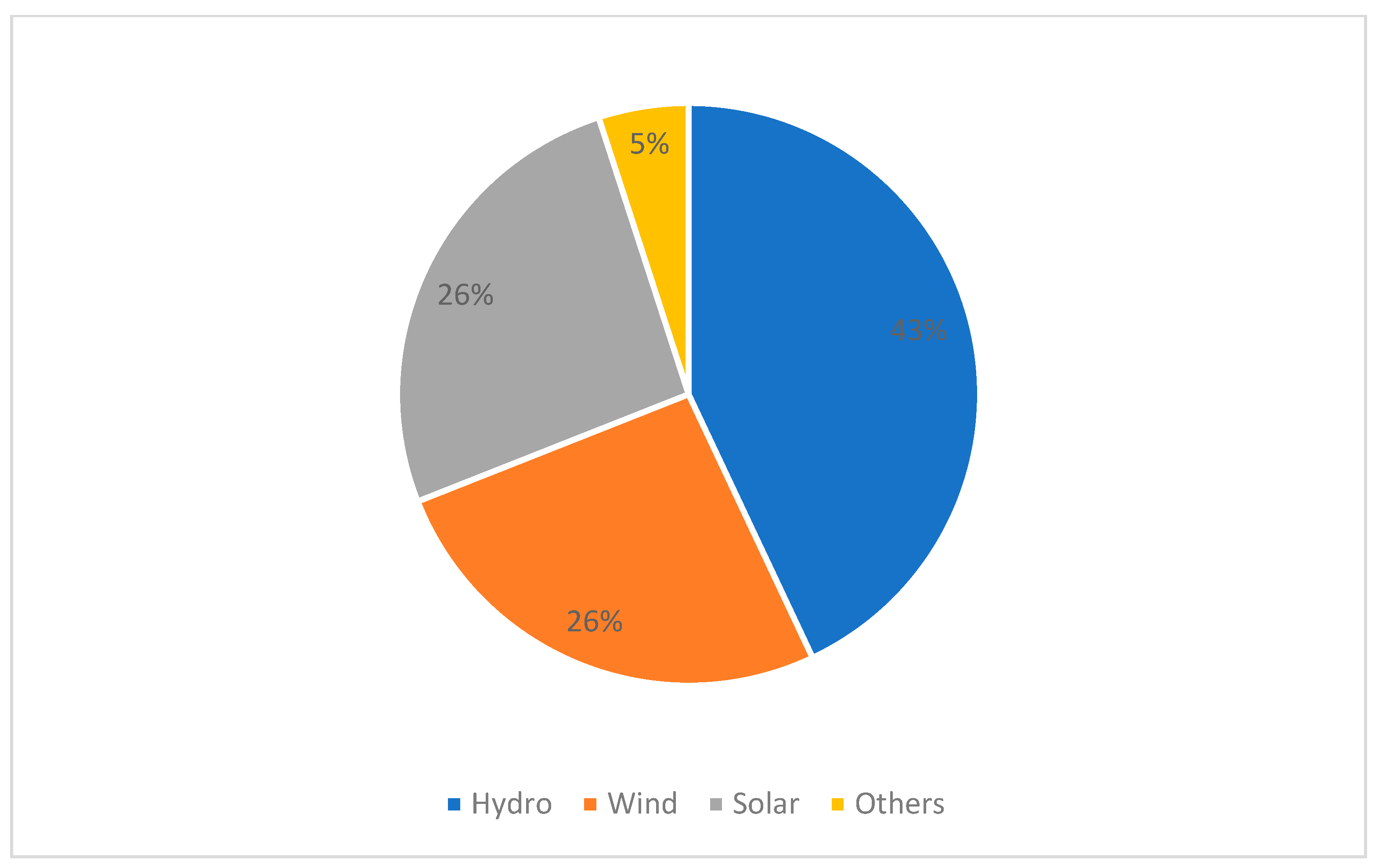
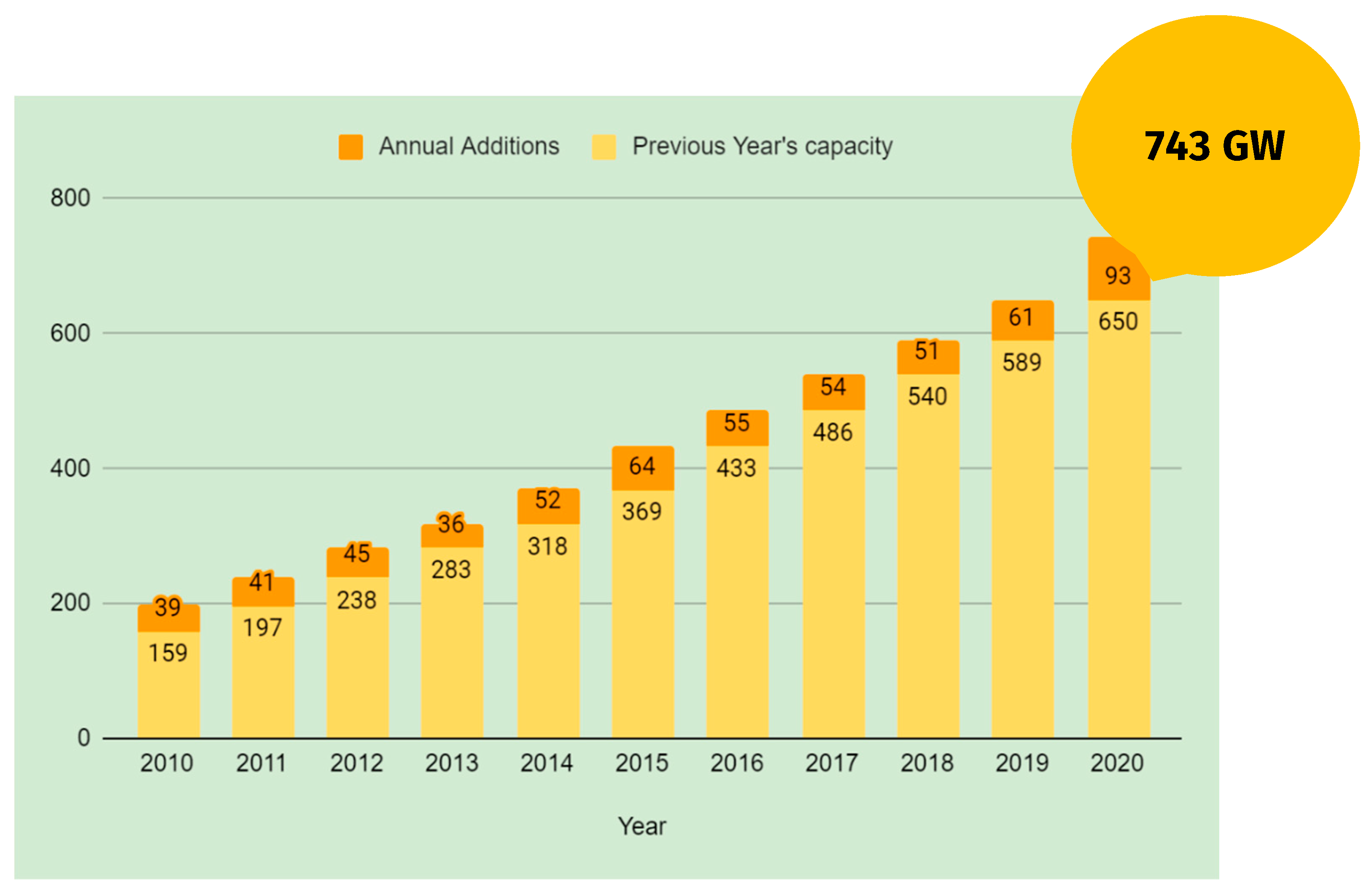

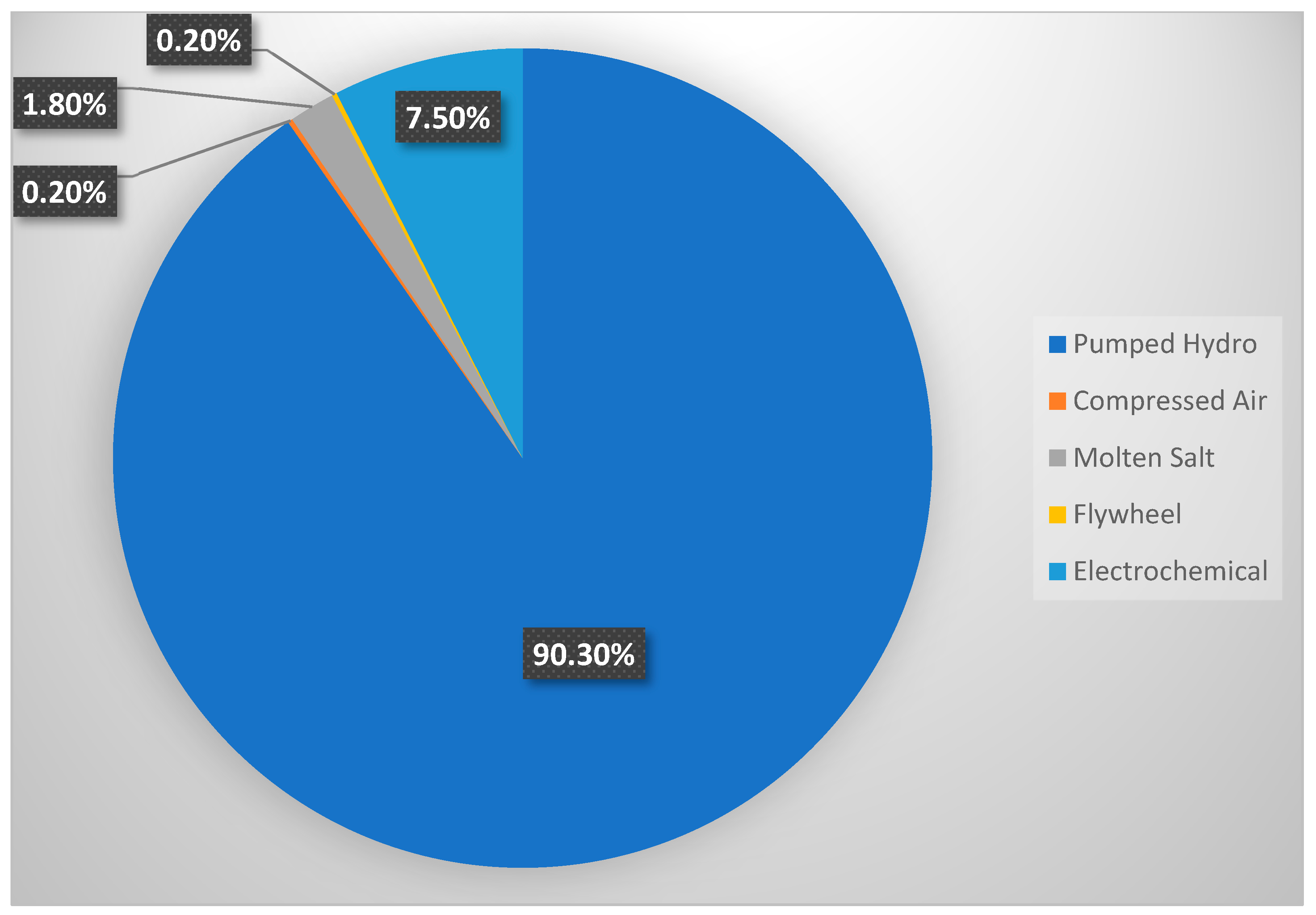
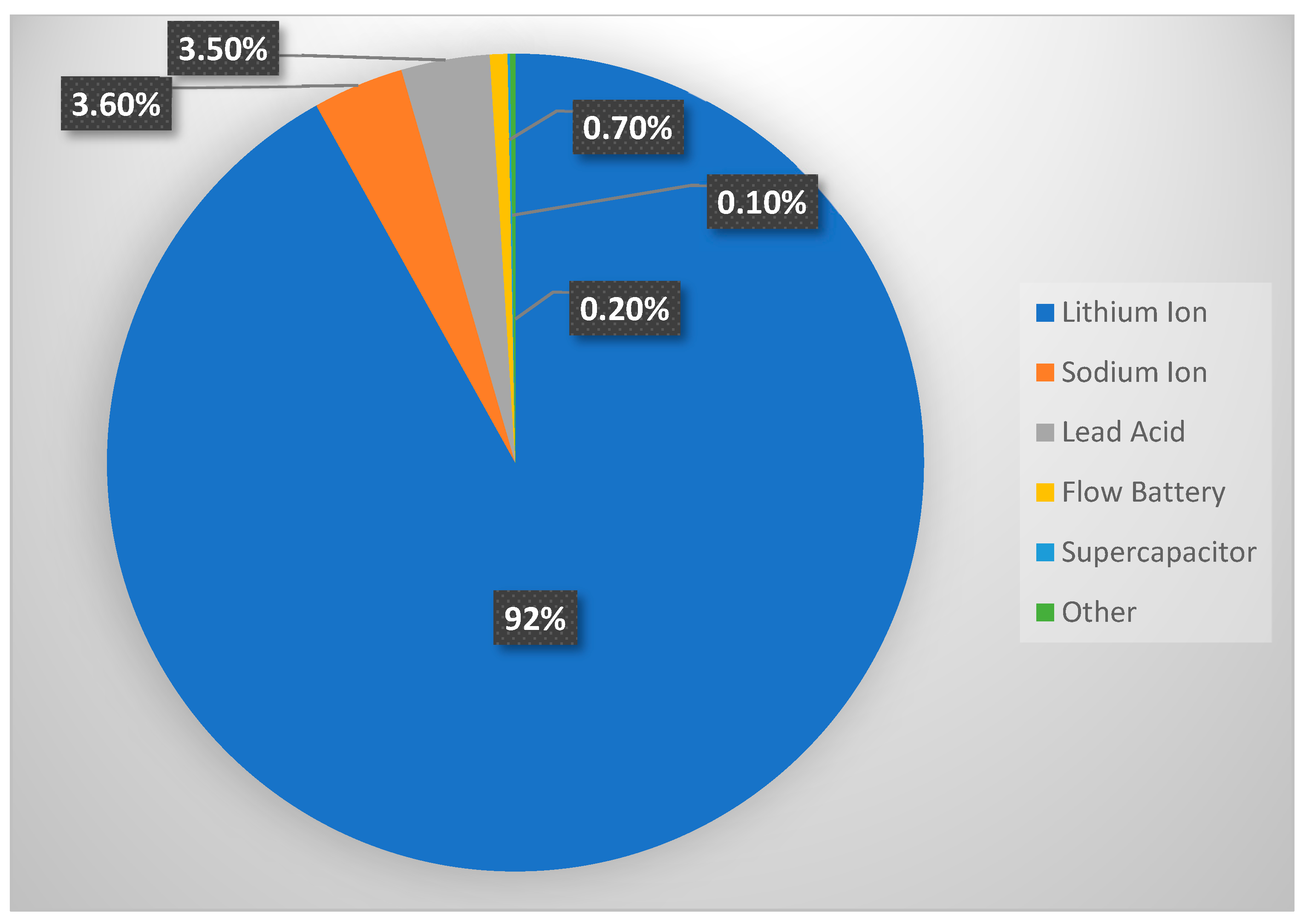
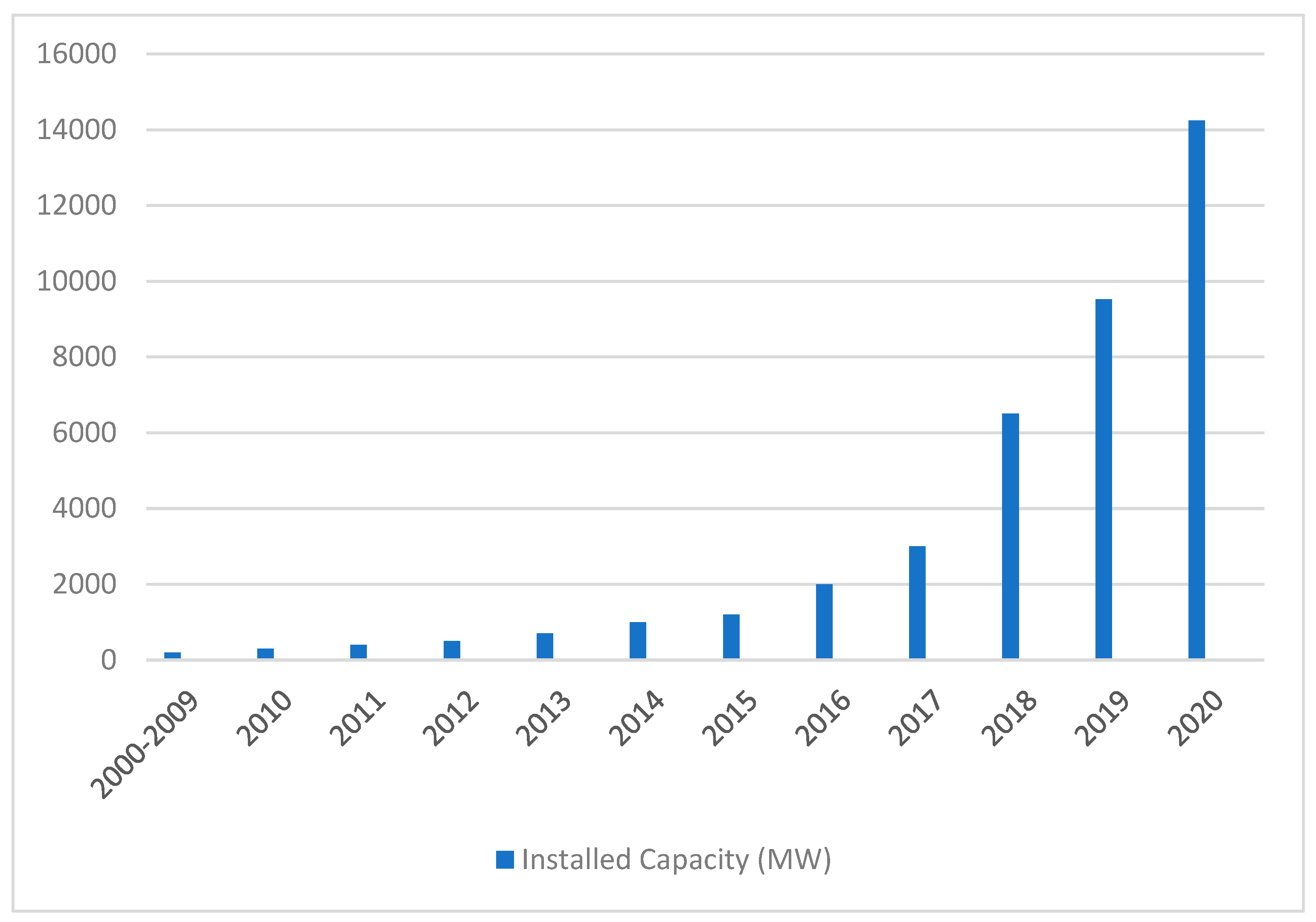
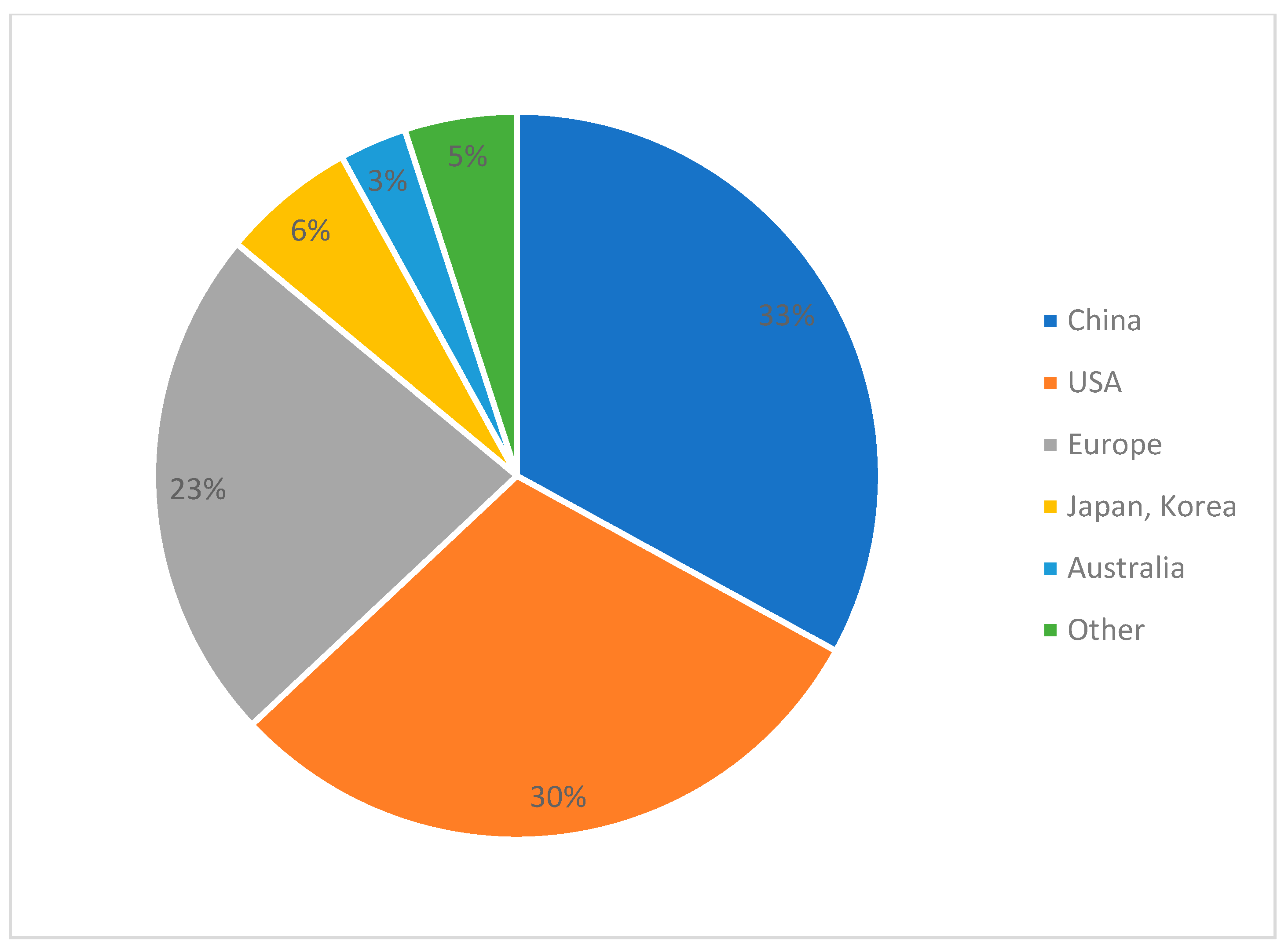
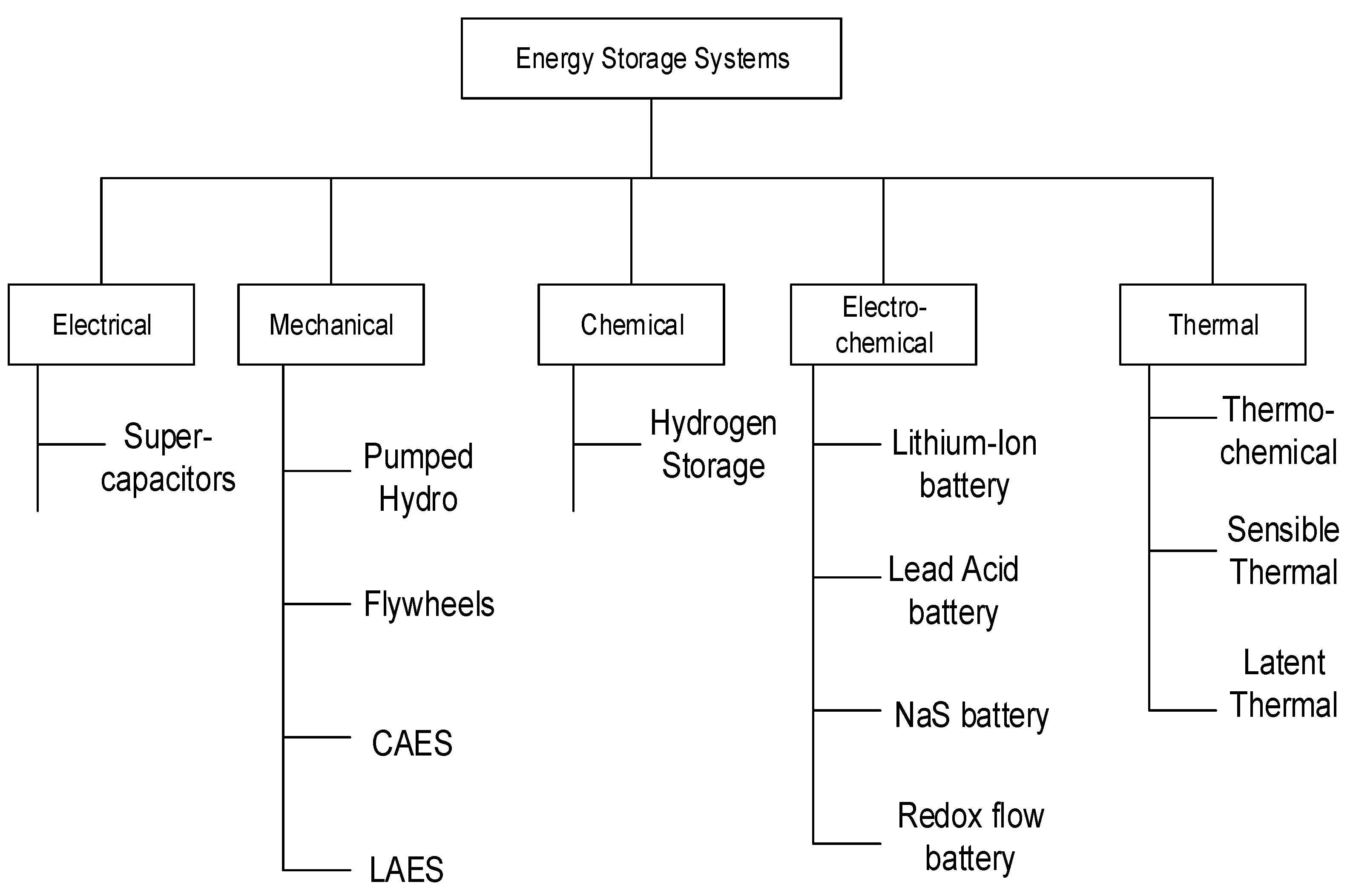
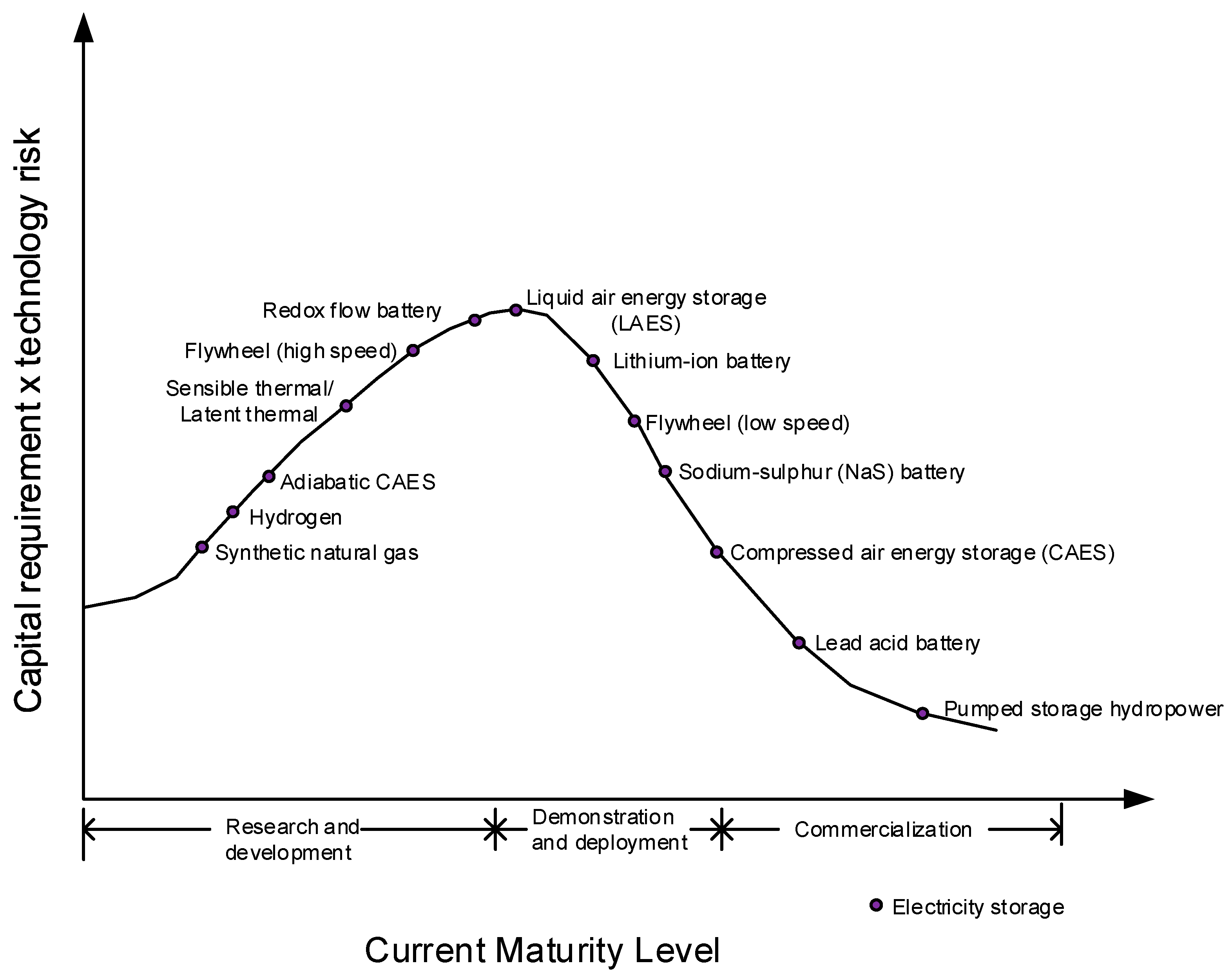

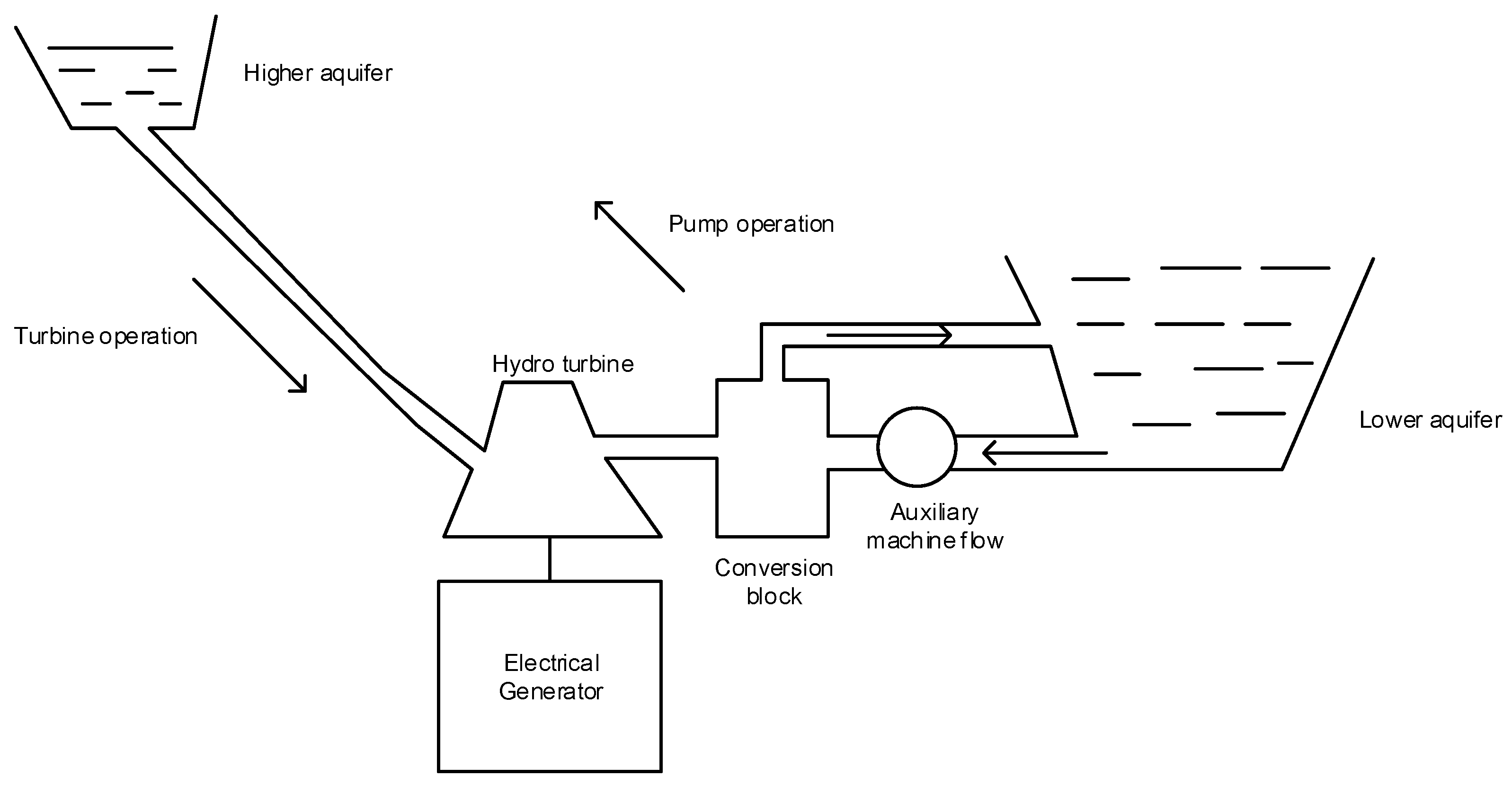


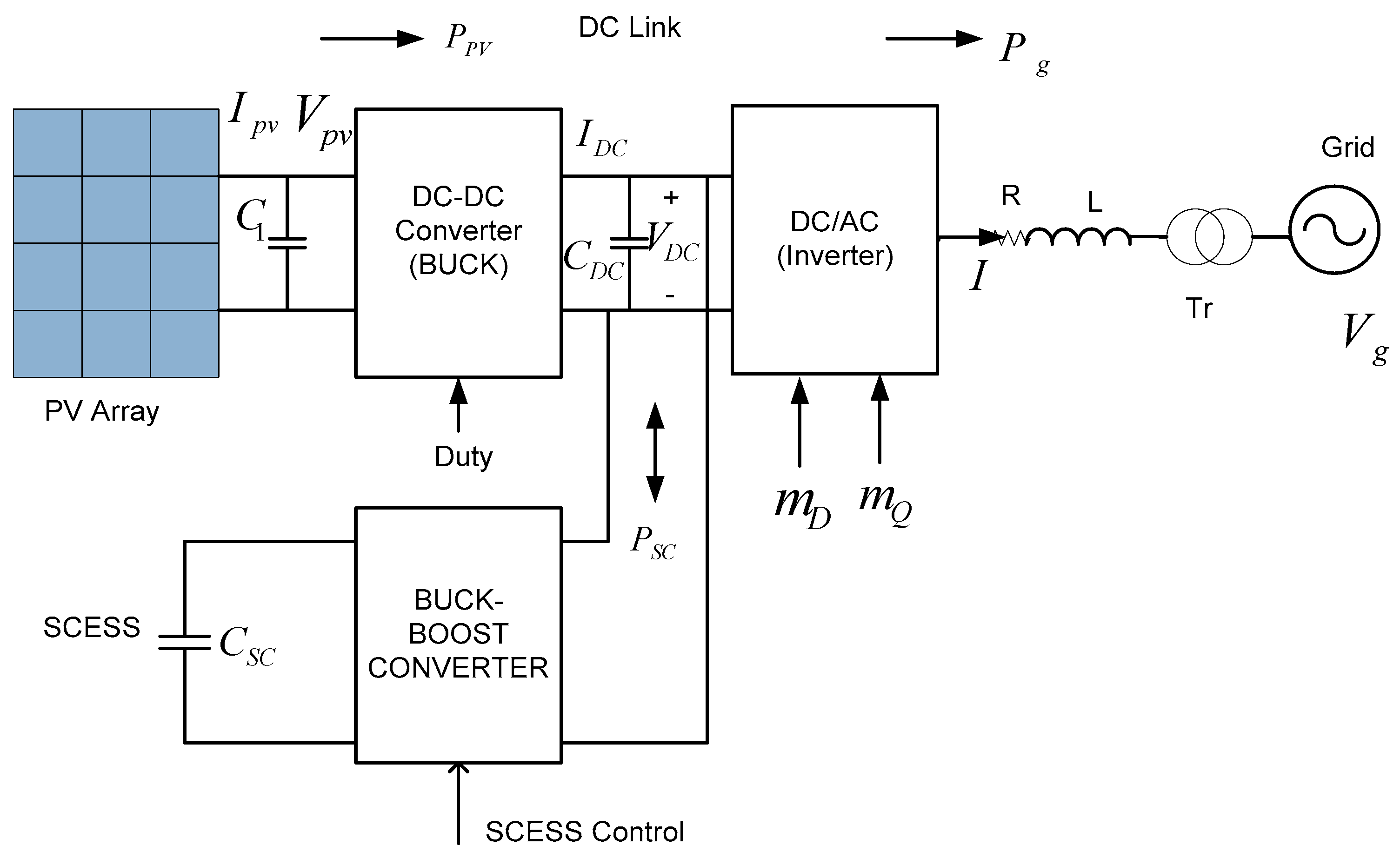
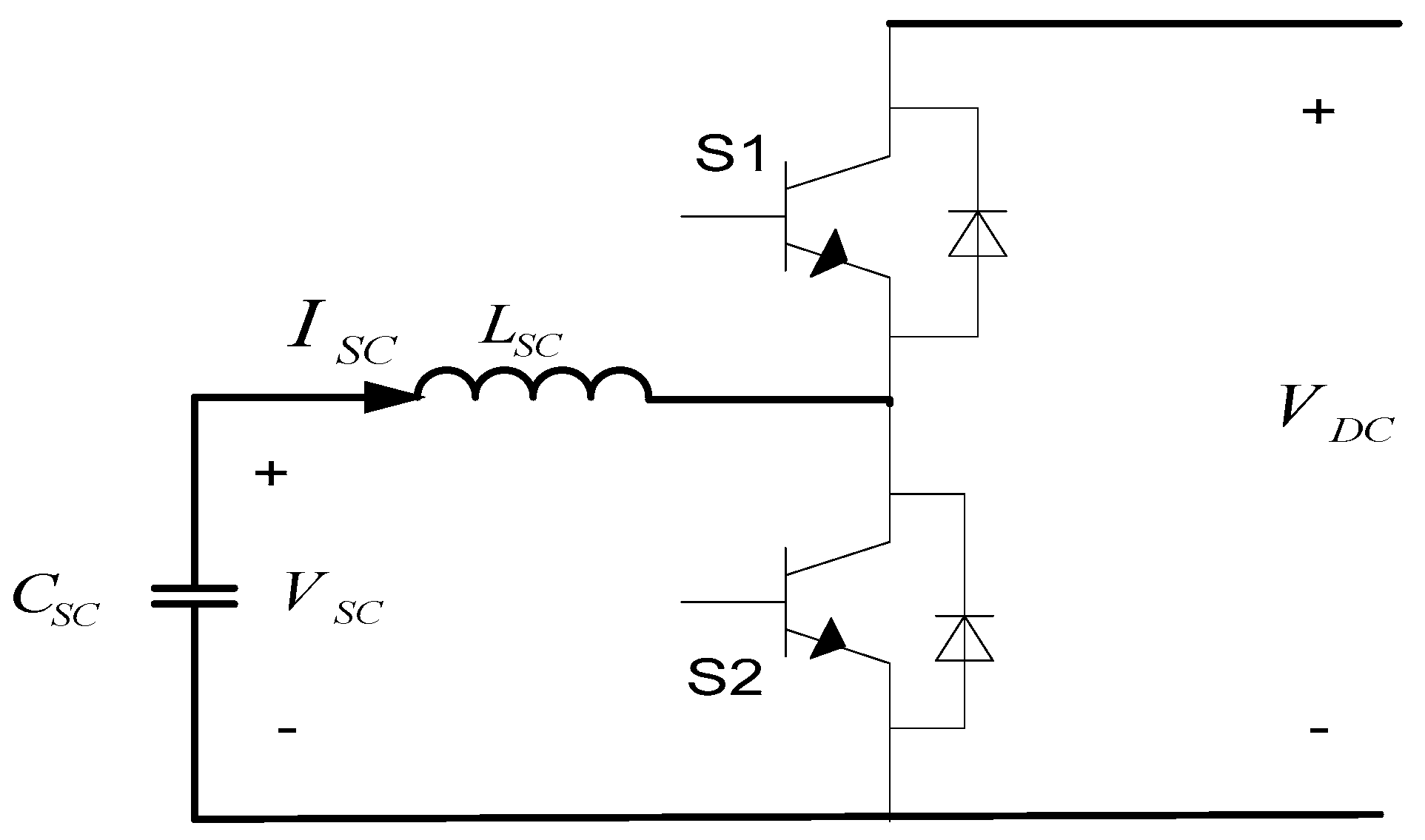
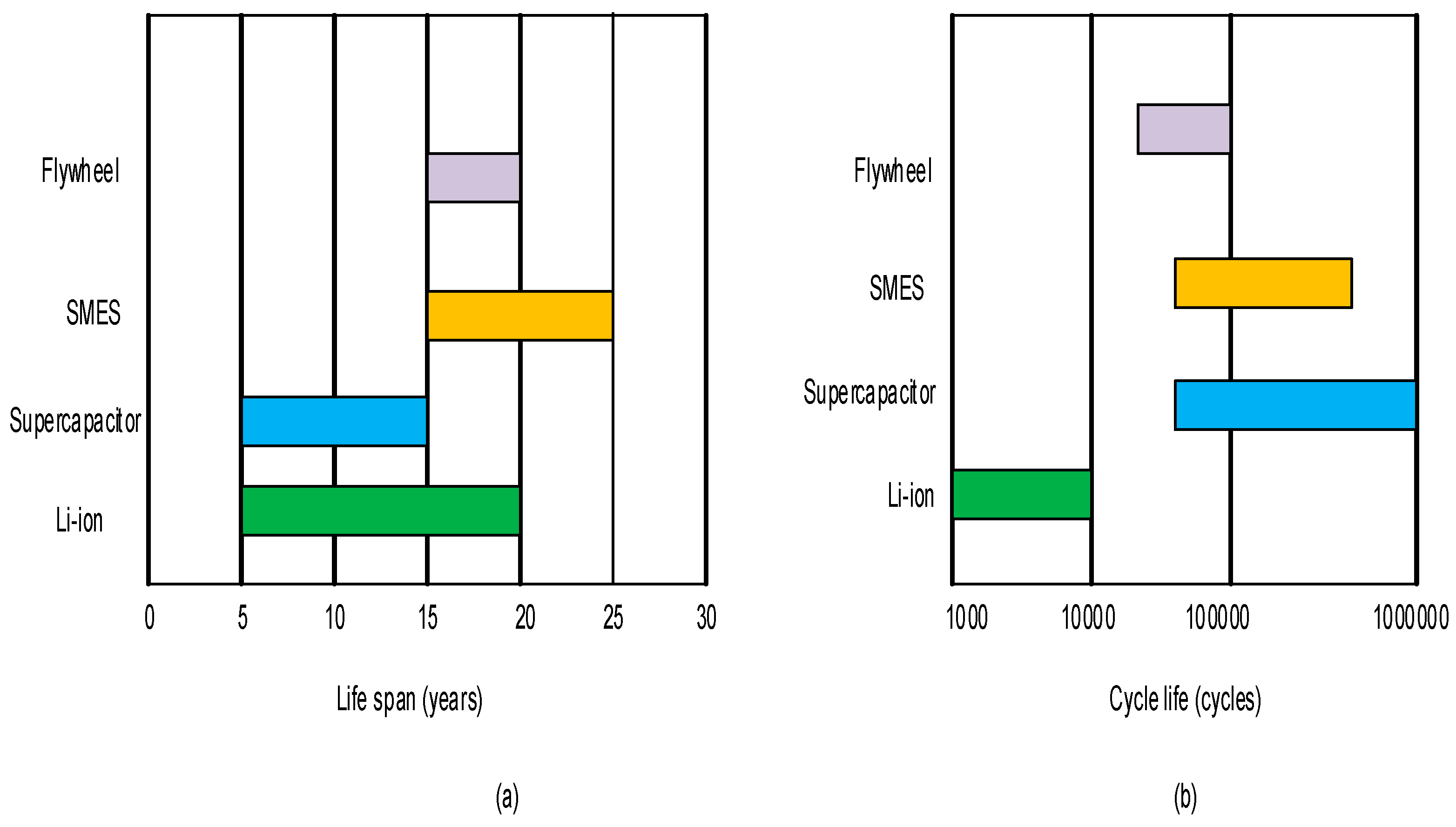
| Region | Capacity | Global Share | Change | Growth |
|---|---|---|---|---|
| Asia | 1286 GW | 46% | +167.6 GW | +15% |
| Eurasia | 116 GW | 4% | +6.2 GW | +6% |
| Europe | 609 GW | 22% | +34.3 GW | +6% |
| North America | 422 GW | 15% | +32.1 GW | +8.2% |
| South America | 233 GW | 8% | +9.2 GW | +4.1% |
| Central America and the Caribbean | 16 GW | 1% | +0.3 GW | +2.1% |
| Middle East | 24 GW | 1% | +1.2 GW | +5.2% |
| Africa | 54 GW | 2% | +2.6 GW | +5% |
| Oceania | 44 GW | 2% | +6.9 GW | +18.5 |
| Technology | Power | Energy Density | Backup Time | Response Time | Efficiency (%) |
|---|---|---|---|---|---|
| Pumped hydro | 100 MW–2 GW | 400 MWh–20 GWh | hours | 12 min | 70–80 |
| CAES | 110–290 MW | 1.16–3 GWh | hours | 12 min | 99 |
| BESS | 100 W–100 MW | 1 kWh–200 MWh | hours | seconds | 60–80 |
| Flywheels | 5 kW–90 MW | 5–200 kWh | minutes | 12 min | 80–95 |
| SMES | 170 kW–100 MW | 110 Wh–27 kWh | seconds | milliseconds | 95 |
| Supercapacitors | <1 MW | 1 Wh–1 kWh | seconds | milliseconds | >95 |
Publisher’s Note: MDPI stays neutral with regard to jurisdictional claims in published maps and institutional affiliations. |
© 2022 by the author. Licensee MDPI, Basel, Switzerland. This article is an open access article distributed under the terms and conditions of the Creative Commons Attribution (CC BY) license (https://creativecommons.org/licenses/by/4.0/).
Share and Cite
Worku, M.Y. Recent Advances in Energy Storage Systems for Renewable Source Grid Integration: A Comprehensive Review. Sustainability 2022, 14, 5985. https://doi.org/10.3390/su14105985
Worku MY. Recent Advances in Energy Storage Systems for Renewable Source Grid Integration: A Comprehensive Review. Sustainability. 2022; 14(10):5985. https://doi.org/10.3390/su14105985
Chicago/Turabian StyleWorku, Muhammed Y. 2022. "Recent Advances in Energy Storage Systems for Renewable Source Grid Integration: A Comprehensive Review" Sustainability 14, no. 10: 5985. https://doi.org/10.3390/su14105985
APA StyleWorku, M. Y. (2022). Recent Advances in Energy Storage Systems for Renewable Source Grid Integration: A Comprehensive Review. Sustainability, 14(10), 5985. https://doi.org/10.3390/su14105985






